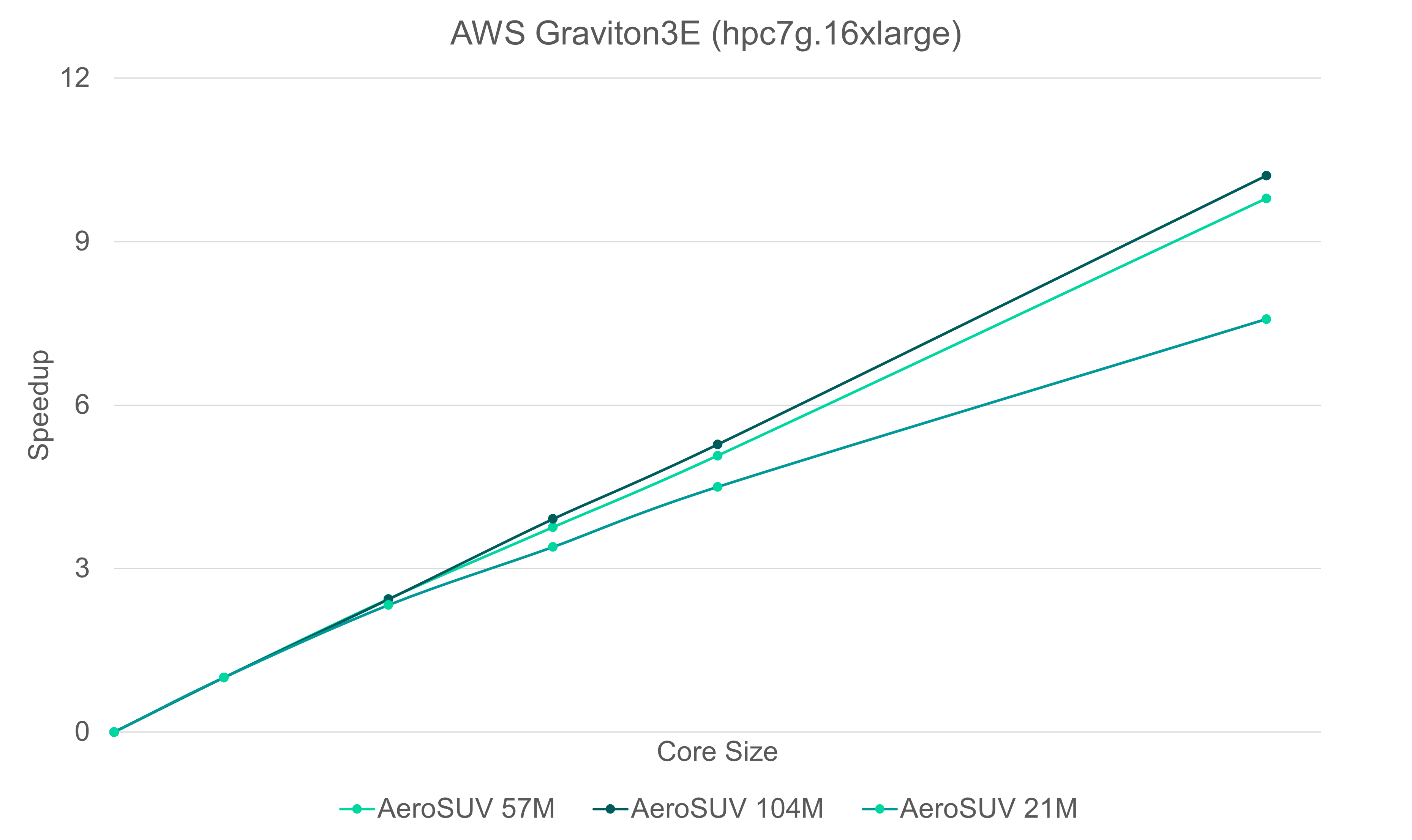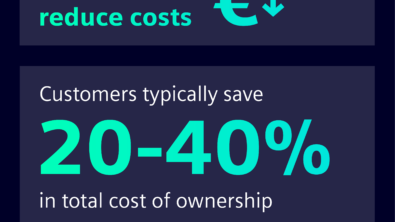Riding the innovation bullet train: Simcenter X HPC gets Arm-ed with Amazon EC2 Hpc7g Instances for high-speed, sustainable CFD

Last year, during a work trip to Japan, I found myself immersed in the technological marvels that the country has to offer. From the efficient mass transit system to cashless payments and high-speed trains, Japan is known for embracing innovation. The highlight of my trip was riding on the Shinkansen, reaching speeds of nearly 200 miles per hour.
Train over car – an easy choice
It got me thinking. What makes people choose to travel by train? Is it the high speed, or reliability and the absence of traffic queues? Is it the efficiency of putting hundreds of individual journeys on a single, optimized, vehicle and thus the smaller carbon footprint? Is it the arguably more relaxing experience of letting someone else handle the logistics of your journey? Not to mention the operation, maintenance, procurement, fueling… travelling by train, at least in Japan, is an unquestionable win-win.
Already spellbound by the performance, I was impressed to learn about the Chūō Shinkansen, the next-generation bullet train set to travel at speeds of up to 275 mph on a groundbreaking maglev track. The Chūō Shinkansen represents a fundamental principle of innovation – looking forward, not content with the status quo. It encapsulates the idea that true progress comes from prioritizing innovative ideas and big picture thinking rather than continuing to pursue only established ideas.
It’s a train of thinking (ahem) that the HPC world will certainly recognize. More and more customers are seeing tangible benefits of moving from private computing vehicles to highly efficient and fast cloud HPC. Not only that but we are seeing a continuous stream of innovation across architecture, infrastructure and delivery, and immediate adoption of these new technologies as end users are able to get instant access to them through cloud services.
And so it is behind the scenes of Simcenter X HPC, our flagship cloud simulation platform for CFD. We are constantly evaluating which technology train we should jump on next.
Arm-ed with Graviton3E: More efficient = more sustainable
Just like moving from car to train, moving HPC workloads away from on-premises hardware and into the cloud can deliver significant CO2 reductions, as well as overall cost savings, thanks to the economies of scale involved. And we are now seeing a raft of new technologies to reduce that CO2 footprint even further. The Arm Neoverse-based Graviton3E processors offer low latency and high network performance, making them ideal for demanding tasks like Computational Fluid Dynamics (CFD), and they do all of this while consuming 60% less energy than equivalent x86-based processors.
AWS’s commitment to renewable energy by 2025 aligns perfectly with this shift, promising to cut carbon emissions across the industry significantly. Now, complex simulations can run seamlessly and sustainably in the cloud, reducing our reliance on heavy, on-premise infrastructure.
This is big news for Simcenter X HPC users that rely on cloud HPC for their compute needs, and a significant step on a journey towards sustainability in the world of high fidelity simulation.
The next train arriving at platform X is… Amazon EC2 Hpc7g
Regular travelers will know – when you submit a job in the cloud using Simcenter X HPC you get to choose between four sizes of virtual cluster which, under the hood, are spun up and provisioned for you using infrastructure provided by Amazon Web Services (AWS). To deliver this service, Siemens and AWS have already done the hard work of optimizing this setup for price performance so that you don’t have to think about exactly which hardware or architecture you are using (of course, if you are interested you can read all about it in the documentation).
Following detailed benchmarking exercises, we found that the Graviton3E powered Amazon EC2 Hpc7g Instances could deliver on average the same performance for the same cost as x86-powered instances. Because the Hpc7g instances are more performant for CFD workloads with Simcenter STAR-CCM+, you don’t need to use so many of them to get the same result in the same amount of time.
But you will rest assured that you run your CFD with a way lower carbon footprint!
Performance and scalability of Amazon EC2 Hpc7g for Simcenter X HPC
To validate performance of the new Amazon EC2 Hpc7g Instance type in the cloud HPC capability of Simcenter X, we benchmarked the scalability of an AeroSUV model across various mesh sizes. The AeroSUV simulations were tested with 3 different mesh resolutions—21, 57, and 106 million cells—on clusters of different sizes (Extra Small, Small, Medium, Large and Extra Large). The performance was evaluated based on relative speedup to the extra small cluster.
The chart below shows that Hpc7g instances have excellent scalability across cluster sizes. For all mesh sizes, there is a near-linear speedup as the cluster size grows, reflecting efficient parallel processing capabilities. Notably:
- 106 million cells: The largest mesh, at 106 million cells, achieves the highest speedup, with performance scaling effectively as the cluster size increases to L.
- 57 million cells: The medium-sized mesh also scales well, closely tracking the 106M performance curve, and maintaining efficient speedup with larger clusters.
- 21 million cells : The smallest mesh size shows a slightly lower scalability rate but still benefits significantly from larger cluster sizes.

These results highlight the power of Hpc7g instances in handling large-scale simulations efficiently, making them ideal for demanding CFD workloads like those in Simcenter X. The Hpc7g instance type offers robust scalability, allowing users to use larger clusters to accelerate simulations significantly. With its Arm Neoverse-based architecture optimized for high-performance computing, Hpc7g is a valuable addition to Simcenter X HPC, enhancing both performance and cost-efficiency for engineers and researchers using Simcenter X HPC for complex aerodynamic simulations.
How do I start using Amazon EC2 Hpc7g with Simcenter X HPC?
You don’t need to do anything! If you’re already using Simcenter X HPC, the Amazon EC2 Hpc7g Instances are seamlessly integrated into the platform. When you submit a job, Simcenter X HPC automatically provides the best resources available, including the latest Hpc7g instances, to deliver the required performance and cost-efficiency — no additional setup is required! We have deployed Amazon EC2 Hpc7g in the United States (N.Virginia) and Japan (Tokyo) for Simcenter STAR-CCM+ 2406.
Time to ditch that private computing vehicle…
Many people own personal vehicles to meet basic transportation needs but turn to more advanced and efficient modes of public transport when they need to undertake more complex journeys, like the one I took from Detroit to Tokyo. Like personal vehicles, in-house clusters might offer a sense of control and security, but are not without limitations including high up-front costs, resource-intensive maintenance, and challenges with keeping up with technological advancement and growing demand.

Furthermore, in-house hardware can become outdated quickly, leading to cycles of constant, costly, and difficult upgrades. Luckily, customers no longer must bear the burden of maintaining their own costly in-house clusters and can instead tap into a more advanced, efficient, and cost-effective computing solution to quickly get to where they need to be – “in the cloud”!
…and jump on board Simcenter X HPC
Simcenter X HPC offers cost savings, scalability, and reduced management overhead. It also introduces transformative advantages that significantly affect organizational agility and strategic focus. By using Simcenter X HPC businesses can access cloud computing resources on demand, resulting in a scalability and flexibility that traditional infrastructures cannot match. With this agility, companies can adapt quickly to new opportunities or challenges. It also accelerates product development and innovation cycles. The ability to run concurrent simulations and reduce computation times allows teams to spend more time making engineering decisions and focusing on strategic projects rather than being bogged down by operational constraints.
But the strategic adoption of cloud HPC is not just about enhancing computing capabilities. It is about transforming the methods and speed with which companies work and innovate, much like how the Shinkansen revolutionized travel. It offers a pathway to meeting the market’s current demands and predicting and shaping future trends.
As companies continue their digital transformation journeys, the integration of Simcenter X HPC in their simulation workflows stands out as a critical enabler of long-term success, driving innovation, agility, and a sharper focus on what truly matters to their business.
Ultimately, transitioning to Simcenter X HPC is like going from driving a family car to riding the bullet train. It provides immediate access to the latest hardware and cuts the need for substantial upfront investment. Our partnership with AWS ensures that you have access to ultramodern computing resources and the ability to easily scale, depending on your workloads. Experience the liberation of travelling light.
Oh, and for my next high-speed train ride, I will probably not have to travel to Japan…and could just ride one “of ours”…



